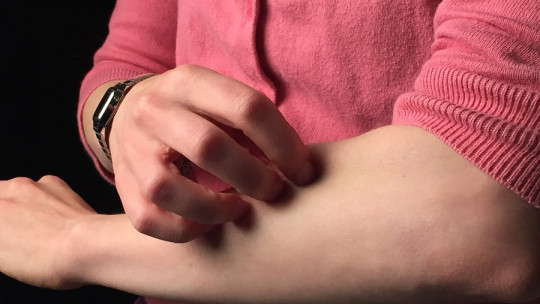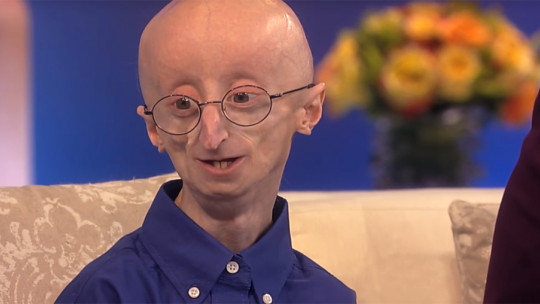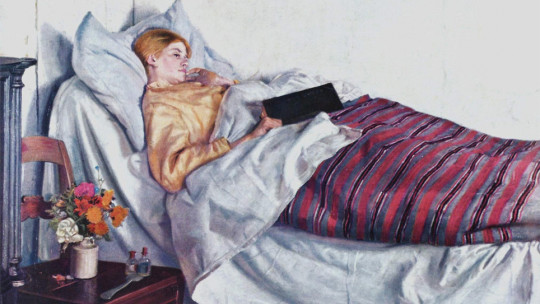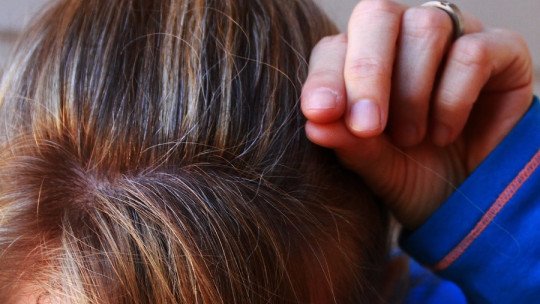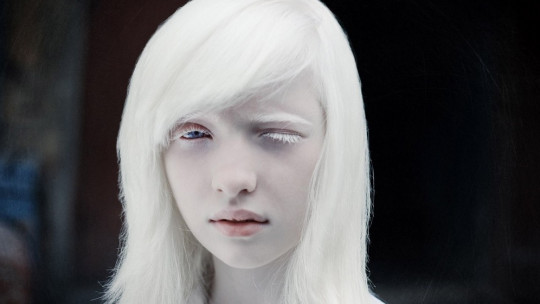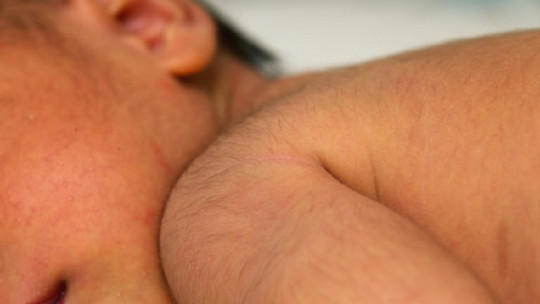Hair loss is known clinically as alopecia. And men and women can suffer hair loss after a certain age, for various reasons.
Alopecia can have many different origins, frequently its causes are genetic or come from poor diet, nutritional deficiencies can lead to pathological conditions such as anemia, where a lack of iron is likely to cause alopecia.
One of the most common causes of hair loss is stress. Stress is a condition that adds to all other factors, and is one of the main reasons why people who suffer from alopecia lose more or less amount of hair.
In cases where stress is the main cause of hair loss, we speak of nervous alopecia In this article we will talk about this pathology, describing its causes, symptoms, possible treatments and the different types of hair loss caused by stress.
What is nervous alopecia?
Nervous alopecia is a pathology in which hair loss resulting from situations of stress, anxiety, depression or other conditions that affect the nerves
Nervous alopecia can appear in people without previous hair loss problems; hair can suddenly begin to fall without any prior condition. Nervous alopecia can also make hair loss worse in people who already had hair loss problems.
Problems that affect the nerves are quite common in our current society. The modern pace and lifestyle can cause stress and anxiety in many people. These two conditions are responsible for numerous dermatological problems , like hair loss. In stressful situations that last a long time or are intense, 7 out of 10 of our hair follicles can be affected, as experts point out.
Causes of hair loss
A recent study published in the journal Nature demonstrated the physiological relationship between hair loss and stress.
The hair follicle is the part of the scalp in which the stem cells that give rise to hair growth are concentrated; they rise from a tube-shaped fold. The hair or hair is composed of keratinized cells originated and renewed by the hair follicle. The hair follicle is constantly functioning, it is one of the most dynamic structures in the entire body.
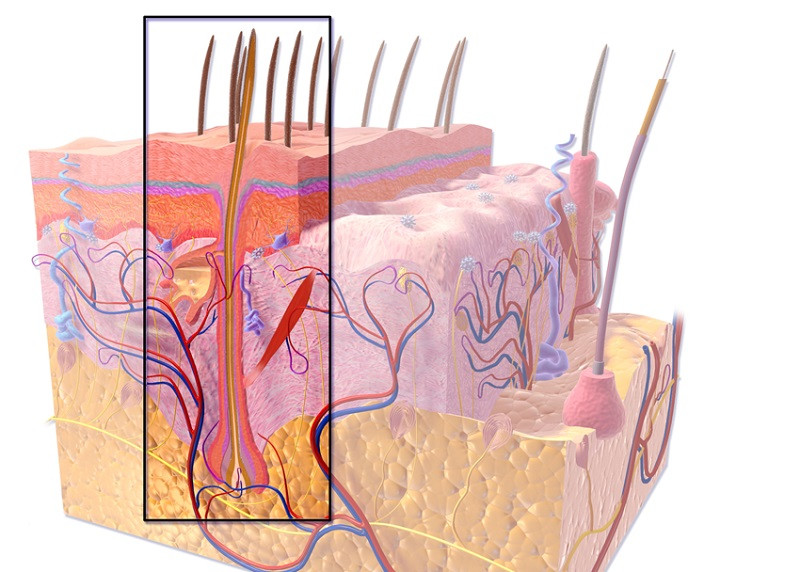
In the study carried out by Nature it was shown The so-called stress hormone, cortisol, affects the stem cells of the hair follicle Cortisol subjects the stem cells to a prolonged resting phase, there is no regeneration of the follicle or hair and, ultimately, baldness occurs.
Types of stress-related hair loss
Stress is responsible for causing hair loss. There are three types of hair loss that are associated with high levels of stress:
1. Telogen effluvium
Telogen effluvium (TE) occurs when there is a change in the number of follicles responsible for hair growth If this change occurs during the telogen phase, the resting phase of hair growth, it can cause hair loss.
The loss of follicles is not homogeneous, it normally does not occur throughout the head, it appears in specific areas. Hair is especially lost in the center of the head, leading to the appearance of plaques. People affected by TE usually do not lose all of their scalp hair.
In more severe cases of this condition, people with ET may experience hair loss in other parts of the body, such as the eyebrows or genital area.
Telogen effluvium is the second most common type of hair loss and a frequent cause of dermatological consultation. Hair loss can occur in both men and women, regardless of age.
ET does not permanently damage hair follicles, therefore the associated hair loss is reversible. When the follicles recover, the hair will grow again and in a few months the patches will disappear. For this to occur, the underlying cause responsible for the ET must be treated, in this case stress. If the stress or anxiety situation lasts over time, it can affect more follicles permanently.
2. Alopecia areata
Alopecia areata (AA) is an autoimmune disease. The immune system recognizes the follicles as foreign bodies and attacks them, causing hair loss. The origin of alopecia areata, like other autoimmune conditions, may be stress.
hair loss It can be in the form of claps, usually round , or spread throughout the scalp. Alopecia areata in its most severe form can affect the entire body and attack the hair in all areas, this condition is known as alopecia universalis.
Alopecia areata can present periods of remission where the hair grows back However, there is still no defined treatment for this autoimmune disease. Although there are pharmacological treatments to help people who suffer from hair loss of more than 50%. This condition is more common than is thought and affects approximately 2 out of every 100 people in Spain.
3. Trichotillomania
Trichotillomania is a type of traumatic alopecia, included in the DSM-5 (Diagnostic and Statistical Manual of Mental Disorders) and is part of the obsessive-compulsive disorders.
Trichotillomania is defined as the act of continuous hair pulling, causing noticeable hair loss The person who suffers from trichotillomania may pull out hair from the scalp or other areas of the body.
Normally, hair pulling occurs when the person is bored or distracted, and does so unconsciously. Sometimes pulling can also be used as a way to relieve stress or other negative emotions, in this case they are conscious.
The hair loss caused by trichotillomania is notable, especially in the facial area: scalp, eyebrows and eyelashes. This causes shame in the affected people, which causes greater stress and aggravates the disorder, producing a kind of vicious circle.
Is hair loss caused by stress permanent?
One of the questions that most worries people who suffer from nervous alopecia is whether the hair loss is permanent. If the main cause is stress, hair may grow back over time, although the rate of recovery will vary depending on the person.
Human hair growth responds to a cycle that is divided into four phases with their different times The human scalp has on average about 100,000 follicles, each of the hair follicles is in a different phase of the growth cycle. Depending on the growth phase of the follicle, it will take more or less time to grow.
- The anagen phase. It lasts from two to seven years, it is the hair growth phase.
- The catagen phase. It is the short phase, it lasts about two weeks and occurs when the hair follicle begins to shrink.
- The telogen phase. In this phase the follicle is at rest, it normally lasts three months.
- The exogenous phase. In this phase the follicle detaches from the hair and new growth begins.
If your hair loss has been triggered by stress, managing stress could be the key to returning to a healthy hair growth rate.
Treatment of nervous alopecia
There are a number of strategies that can be followed to reduce stress-related hair loss and promote recovery, including a healthy diet, stress management techniques and drug treatment.
1. Diet and nutrition
Eating a healthy and balanced diet is essential for general health, which includes the scalp Although the diet must provide a whole series of essential vitamins, some help enormously with hair growth. They can be included in the diet or as supplements. Vitamin C, B and E help prevent hair loss.
Faced with any health problem, proper hydration is essential, since all the cells in the body depend on water to function. Health professionals recommend drinking between 2.7 and 3.7 liters of water daily. Not all water comes directly from drinks, foods also include water, so about 8 glasses of water a day are recommended to achieve good hydration.
2. Stress management
Learning to manage stress levels effectively can help reduce the risk of further hair loss. People can try different stress management techniques before finding the one that works best for them and suits their personality. Although there are some popular ways to reduce stress as:
- The practice of physical exercise
- Dedicate time to hobbies
- To write a diary
- Breathing and meditation techniques.
3. Topical treatments
A series of creams, oils and other topical products can help with hair loss, minoxidil, corticosteroids and castor oil are frequently used to combat alopecia problems.


